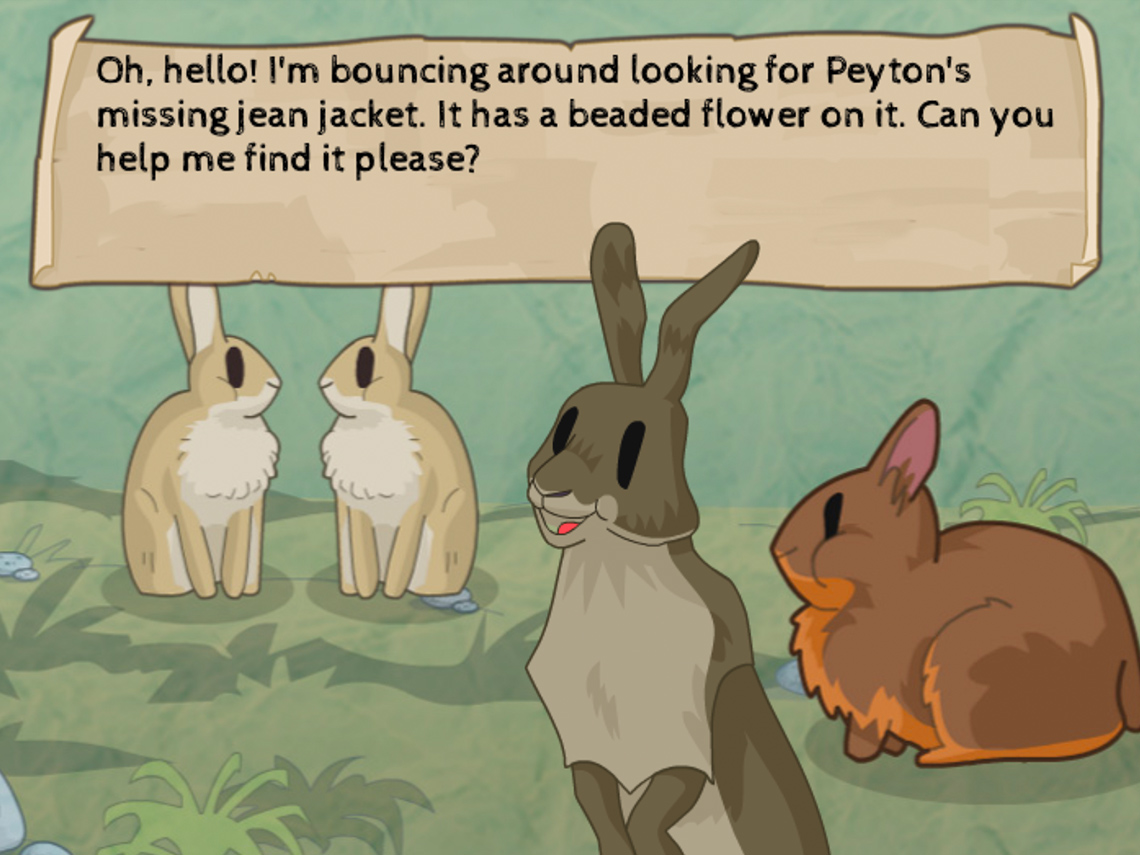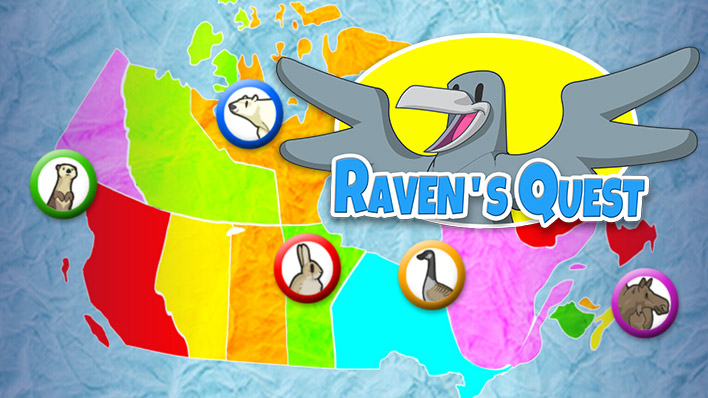Minds On
Pronouns
What are pronouns? Access the video “Secret Identity” to see!
Student Success
Speech bubbles
Explore the words in the speech bubbles for each character.
Think of a few places (1-3) where you hear or see these words used.
Note to teachers: See your teacher guide for collaboration tools, ideas and suggestions.
Maybe some places you thought about are:
- conversations
- stories
- advertisements
- instructions
- reports or news articles
What’s the difference?

When listening to or reading a story think about when characters speak in 1st person narrative.

Think about listening or reading a story when characters speak in 3rd person narrative.

Which one do you prefer? Do you think it makes a difference as a reader?
Some stories are told in 1st person like you are listening to the character talk, and some stories are told in 3rd person like someone is telling you a story about the character.
Either way, in this learning activity you’re going to practise writing in 3rd person!
Action
Raven’s Quest Game
Student Success
Playing out a story!
Play Raven’s Quest. Have fun checking out different communities. Get used to each animal’s story for each community in the game. Each animal contributes to part of the story in Raven’s Quest. Are the animals telling part of the story in 1st person or 3rd person?
Note to teachers: See your teacher guide for collaboration tools, ideas and suggestions.
Watching a player
Choose one of Raven’s friends’ stories about their home. They shared their story in 1st person. Now it is your turn to share their story!
Share 3 important things that you learned about that friend and their life as you played the game. Be sure to use 3rd person, which means they, them, he, she, and it.
You can also talk about the game you played in this area of Canada, but be sure to talk about yourself in the 3rd person!
Your 3rd person paragraph should include:
- the friend sharing their story
- where they live in Canada
- important information about their area
- what game you played (using 3rd person words)

Explore the example that Mo wrote below about visiting the Canadian Shield in the game.
Raven’s Quest Game Story Example
Mo went to visit the Canadian Shield and discovered Raven played some tricks on Goose, Fox and Turtle. Mo decided to help the animals. Goose asked Mo to help find Jacob’s beads hidden in the trees because she got tricked by Raven. He thought this was pretty EASY to match the pairs to find the beadwork. She was so happy and thankful that she and her flock kept talking in rhymes.
Can you find the 3rd person narrative words in the story of Mo’s Raven’s Quest game? Did you list these words in Mo’s example story?
Mo, Raven, Goose, Fox, Turtle, she, her
You are the writer telling the story about someone else.
Your story doesn’t have to be long.
Now, reread your draft to see if you can add some adjective or adverbs to your story to describe Raven and the animal characters.
Need help with adverbs? Check out this video from Wacky Word Songs about adverbs!
Come up with some adjectives and adverbs for the Raven’s Quest game animal characters in each of your stories.
Add them to your story. Try to use linking words like “and” or “but.”
Rewrite your draft to include the revisions.
Student Tips
Check your draft!
Make sure you included:
- Who? (Raven, specific animal characters, the player’s name)
- What? (things that happened in the story/game)
- How? (describe how the player helped: EASY, MEDIUM, HARD)
- Why? (ask the player why they chose which animals and why they made the decisions they did in the game)
- Where? (which community in the game)
- When? (when was this story game happening)
Lastly, check your work for correct grammar, spelling, and punctuation.
Proofreading
Check that you have the correct simple present and past tenses of verbs.
Verbs
Explore these videos to learn more about verbs and language tense with Teacher Wynne.
Punctuation
Reread your draft to check for capitals, periods, and proper question and/or exclamation marks.
Student Tips
Check your spelling
Reread your draft, this time checking for spelling of familiar and unfamiliar words.
Check your spelling using one or a combination of the following:
- word wall
- online dictionary
- personal dictionary
- picture dictionary
- high frequency word list
Consolidation
Write a short story based on a video
Explore "Stanley's Family Reunion."
Test Your Skills
What makes you special?
Your goal is to create a scene in which you receive a medal at Stanley’s family reunion. What medal would you receive?
Be sure to create your scene in the 3rd person. You will want to use words like “he,” “she,” “they,” “his,” “her,” or “theirs.” You can use a method of your choice to create your scene.
After you create your scene, if possible, have a partner edit and revise. Now create your final draft. Use the feedback you were given to guide your drafts and revisions. Have fun and get imaginative, or even be very silly AND funny with your story!
Reflection
How do you feel about what you have learned in this activity? Which of the next four sentences best matches how you are feeling about your learning? Press the button that is beside this sentence.
I feel...
Now, record your ideas about your feelings using a voice recorder, speech-to-text, or writing tool.
Press ‘Discover More’ to extend your skills.
Discover MoreWrite a letter to an author or illustrator
Research a children’s author or picture book author or illustrator. Write them a letter asking them how they decide whether to write in 1st person or 3rd person narrative. Ask them if they think there’s a difference. Maybe conduct a small survey by interviewing a few story creators about their preference to write in 1st or 3rd person.
